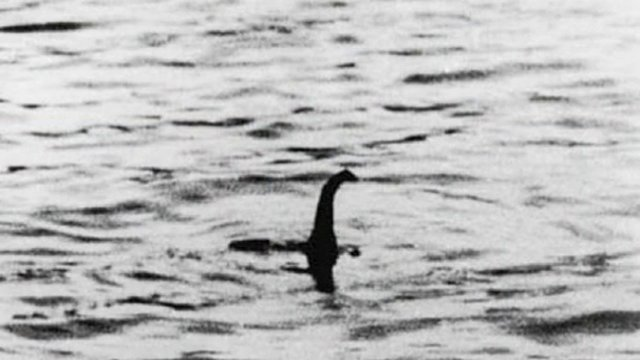
Unit 3, Video 1 – Presentation about the Loch Ness monster (Exercise 1.2)
Good morning everyone, it’s really wonderful to see so many people here. My name is Paul Harris and I have the truly great honour of opening this most unconventional of conventions. I’m absolutely delighted to be here with you today.
Over the next two days, you’re going to hear presentations and panel discussions on a broad range of topics related to the world of the paranormal and cryptozoology, ranging from UFOs in America to the Yeti in Tibet. But in this opening paper, I’d like to focus your attention on a long-standing mystery that’s much closer to home. As I think some of you know already, I’m going to talk about the Loch Ness monster.
Basically, I’ve divided my presentation into three main parts. In the first part, I’ll say a little about the geography of Loch Ness and give you some background to the mystery. Then, in part 2, I’ll talk about some of the classic monster sightings. And finally, in part 3, I’m going to try to answer the question, if there is such a thing as the Loch Ness monster, what on earth could it be?
So, to begin with, let’s start by looking at the physical geography of the loch.
As most of you probably know, Loch Ness is situated in the highlands of Scotland, roughly about 600 miles from where we are today. It’s a very big Loch – about 24 miles long and between one and one and a half miles wide – and it represents the largest volume of freshwater in the British Isles. Now, Loch Ness certainly isn’t the deepest lake in Britain – that award actually goes to Loch Morar over on the west coast – but with an average depth of over 200 metres for most of its length, Loch Ness is still pretty deep and in fact, some statisticians have calculated that every man, woman and child on the planet could be submersed in Loch Ness and there’d still be room left over for quite a few mysteries!
Now, hopefully that gives you some idea of where the Loch is situated and its physical characteristics. As I said at the beginning though, I’d also like to talk about the background to the mystery. Although there have been reports of a strange animal in Loch Ness right back to the 6th century – there is even a record of Saint Columba encountering a water monster near Loch Ness in 565AD – the Loch Ness Monster as we currently know it first came to the general public’s attention back in 1933. A local couple called Mr and Mrs Mackay were travelling in a car by the side of the Loch, when they saw a big disturbance in the water. Mr Mackay was driving, so he had to pay attention to the road, but his wife later said that in the middle of the water disturbance, she saw a big black hump, about seven metres long. She realized that she was watching a living creature when this hump shot off to the other side of the Loch, turned in a half-circle and then suddenly sank. She and her husband waited to see if the animal would come up again, but it had gone. The Mackay sighting was reported to a local newspaper, the Inverness Courier and as the saying goes, the rest is history. After the Mackay’s, other people also began reporting what they’d seen in the Loch and this has continued over the years, right up until the present day.
Which brings us, I think, to the second part of my presentation today – some of the classic monster sightings. I would have to say that this photo is the image that most people think of, when they hear the words Loch Ness monster. It was taken in April 1934 by a London surgeon and has therefore come to be known all around the world as The Surgeon’s photograph. As you can see, it seems to show the head and neck of a strange animal sticking out of the water and going by the ripples on the water surface, it appears that this was quite a large creature. Now, as I was just saying, this image is undoubtedly the most famous one around the world, but I’m afraid that in recent years, there has been some doubt about its authenticity. For example, in 1994, new evidence was uncovered, which suggests that this photograph was in fact a complete hoax. Of course, we’ll probably never know for sure, but now that there’s been some negative evidence about this photo, it’s unlikely that anyone will accept it as proof of a living creature ever again.
Another classic sighting that I’d like to share with you occurred in 1960. Tim Dinsdale, an aeronautical engineer, had gone to Loch Ness with the direct intention of trying to film the monster and on the final day of his week-long expedition, he managed to see a large black hump. Dinsdale looked at this hump through binoculars and realized that he was watching a huge living creature and at this point, he started filming it. the animal that Dinsdale filmed crossed the loch and started to submerge when it was quite near to the other side. After the film had been analyzed by experts from the RAF, the conclusion was that Dinsdale had indeed filmed, as they put it, ‘an animate object’, but it was impossible to say exactly what that object was. Over the years, people have criticized Dinsdale’s film, saying that he must have filmed a boat, but of course these critics are conveniently forgetting that Dinsdale first examined the object through binoculars: if it had been a boat, then presumably he would easily have recognized it as such.
In the 1990s, the Dinsdale film was sent to America for further analysis and computer enhancement and they discovered some exciting features that hadn’t been seen before. By computer enhancing the image of the hump, they found that there is actually a smaller hump right behind it. The debate around Dinsdale’s film still continues to this day, but as I think you’ll agree, the evidence does strongly suggest that he did in fact film exactly what he said he did: an unknown animal swimming in Loch Ness.
Time is marching on, so now I’d like to move on to the final part of my presentation today and consider the question, if there is a Loch Ness Monster, what might it be?
As you probably know, a number of monster theories have been proposed over the years, although none of them are entirely satisfactory. One of the first theories, put forward in the very early days of the mystery, was that the monster might be a shark. Unfortunately, this theory failed to take into consideration the fact that Loch Ness is a freshwater lake, whereas of course sharks live in saltwater. Needless to say, the shark hypothesis didn’t last for long. Another early theory was that the monster might be an overgrown eel. The eel theory actually has quite a lot in its favour, but of course it doesn’t explain everything. For example, witnesses typically report that the monster has a long neck like a giraffe and none of the eels currently known to science are able to rise out of the water vertically and make a neck like that. So, unless we’re dealing with a completely new species of eel, I’m afraid that this theory simply doesn’t account for all the facts.
One of the most popular theories over the years has been that the monster is a type of marine dinosaur, known as a plesiosaur. The skeletons that we have of plesiosaurs certainly look very similar to how the Loch Ness Monster is usually described, but of course there are some major problems with this theory, not least the fact that dinosaurs such as the plesiosaurs supposedly died out 70 million years ago. All things considered, I’d have to say that the plesiosaur theory is probably the least likely.
But I think I’ve said enough about what the monster isn’t – at the start of this presentation, I promised that I would try to identify this creature or creatures, so let’s now think about what the Loch Ness monster is …
If we go back to the very beginning of the mystery and look at some of the early reports from Loch Ness, we can see that the local people were talking about the monster simply being a large fish. And as unexciting as that might seem, this, in my opinion, is still the most likely candidate for the monster today. One such fish, the Atlantic sturgeon, can grow very large indeed – specimens have been caught over three metres long – and because sturgeon are quite rare, most people would be unlikely to recognise them even if they saw one. A sturgeon living in the Loch wouldn’t need to feed on other fish – as you may know, one of the problems that scientists have always had with the concept of a monster is that there aren’t really enough fish in Loch Ness to support any resident predators – and like a salmon, a sturgeon could simply come and go from the Loch via one of the rivers. This would certainly help to account for the scarcity of sightings …
Now, I accept that the sturgeon theory can’t account for every single sighting, but I personally think that back in the 1930s a particularly large sturgeon was probably responsible for setting the whole thing off. As you may know, the waters of Loch Ness can be very deceptive – there are boat wakes; partially submerged rocks; floating tree trunks; and swimming deer … all sorts of confusing things like that – so once the idea of a monster was born, whenever people saw something that they couldn’t easily explain in Loch Ness, they automatically thought of the monster. And of course this has continued right up to the present day. In fact, I would say that it’s now impossible for anyone to visit Loch Ness, without associating it with a monster, in which case unexplained sightings – which I personally believe are simply cases of mistaken identity – are quite likely to continue.
So, that brings us to the end of my paper today. If anyone has any questions, I’ll do my best to answer them …
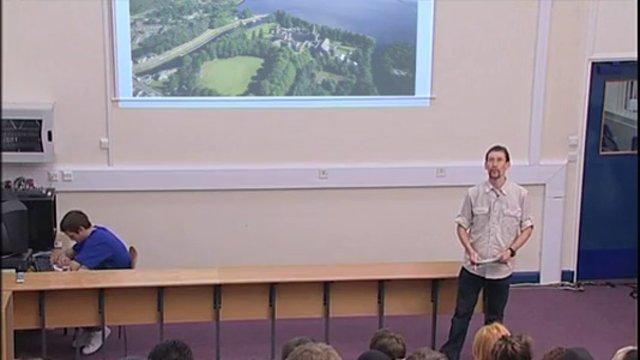
Unit 3, Video 2 – Presentation about the Loch Ness monster (Exercise 1.2)
Click here for supplementary interactive exercises
Introduction
Good morning everyone, it’s really wonderful to see so many people here. My name is Paul Harris and I have the truly great honour of opening this most unconventional of conventions. I’m absolutely delighted to be here with you today. Over the next two days, you’re going to hear presentations and panel discussions on a broad range of topics related to the world of the paranormal and cryptozoology, ranging from UFOs in America to the Yeti in Tibet. But in this opening paper, I’d like to focus your attention on a long-standing mystery that’s much closer to home. As I think some of you know already, I’m going to talk about the Loch Ness monster. Basically, I’ve divided my presentation into three main parts. In the first part, I’ll say a little about the geography of Loch Ness and give you some background to the mystery. Then, in part 2, I’ll talk about some of the classic monster sightings. And finally, in part 3, I’m going to try to answer the question, if there is such a thing as the Loch Ness monster, what on earth could it be?

Unit 3, Video 3 – Presentation about the Loch Ness monster (Exercise 1.2)
Click here for supplementary interactive exercises
Part 1
So, to begin with, let’s start by looking at the physical geography of the Loch. As most of you probably know, Loch Ness is situated in the highlands of Scotland, roughly about 600 miles from where we are today. It’s a very big Loch – about 24 miles long and between one and one and a half miles wide – and it represents the largest volume of freshwater in the British Isles. Now, Loch Ness certainly isn’t the deepest lake in Britain – that award actually goes to Loch Morar over on the west coast – but with an average depth of over 200 metres for most of its length, Loch Ness is still pretty deep and in fact, some statisticians have calculated that every man, woman and child on the planet could be submersed in Loch Ness and there’d still be room left over for quite a few mysteries!
Now, hopefully that gives you some idea of where the Loch is situated and its physical characteristics. As I said at the beginning though, I’d also like to talk about the background to the mystery. Although there have been reports of a strange animal in Loch Ness right back to the 6th century – there is even a record of Saint Columba encountering a water monster near Loch Ness in 565AD – the Loch Ness Monster as we currently know it first came to the general public’s attention back in 1933. A local couple called Mr and Mrs Mackay were travelling in a car by the side of the Loch, when they saw a big disturbance in the water. Mr Mackay was driving, so he had to pay attention to the road, but his wife later said that in the middle of the water disturbance, she saw a big black hump, about seven metres long. She realized that she was watching a living creature when this hump shot off to the other side of the Loch, turned in a half-circle and then suddenly sank. She and her husband waited to see if the animal would come up again, but it had gone. The Mackay sighting was reported to a local newspaper, the Inverness Courier and as the saying goes, the rest is history. After the Mackay’s, other people also began reporting what they’d seen in the Loch and this has continued over the years, right up until the present day.

Unit 3, Video 4 – Presentation about the Loch Ness monster (Exercise 1.2)
Click here for supplementary interactive exercises
Part 2
Which brings us, I think, to the second part of my presentation today – some of the classic monster sightings. I would have to say that this photo is the image that most people think of, when they hear the words Loch Ness Monster. It was taken in April 1934 by a London surgeon and has therefore come to be known all around the world as The Surgeon’s photograph. As you can see, it seems to show the head and neck of a strange animal sticking out of the water and going by the ripples on the water surface, it appears that this was quite a large creature. Now, as I was just saying, this image is undoubtedly the most famous one around the world, but I’m afraid that in recent years, there has been some doubt about its authenticity. For example, in 1994, new evidence was uncovered, which suggests that this photograph was in fact a complete hoax. Of course, we’ll probably never know for sure, but now that there’s been some negative evidence about this photo, it’s unlikely that anyone will accept it as proof of a living creature ever again. Another classic sighting that I’d like to share with you occurred in 1960. Tim Dinsdale, an aeronautical engineer, had gone to Loch Ness with the direct intention of trying to film the monster and on the final day of his week-long expedition, he managed to see a large black hump. Dinsdale looked at this hump through binoculars and realized that he was watching a huge living creature and at this point, he started filming it. the animal that Dinsdale filmed crossed the loch and started to submerge when it was quite near to the other side. After the film had been analyzed by experts from the RAF, the conclusion was that Dinsdale had indeed filmed, as they put it, ‘an animate object’, but it was impossible to say exactly what that object was. Over the years, people have criticized Dinsdale’s film, saying that he must have filmed a boat, but of course these critics are conveniently forgetting that Dinsdale first examined the object through binoculars: if it had been a boat, then presumably he would easily have recognized it as such. In the 1990s, the Dinsdale film was sent to America for further analysis and computer enhancement and they discovered some exciting features that hadn’t been seen before. By computer enhancing the image of the hump, they found that there is actually a smaller hump right behind it. The debate around Dinsdale’s film still continues to this day, but as I think you’ll agree, the evidence does strongly suggest that he did in fact film exactly what he said he did: an unknown animal swimming in Loch Ness.

Unit 3, Video 5 – Presentation about the Loch Ness monster (Exercise 1.2)
Click here for supplementary interactive exercises
Part 3
Time is marching on, so now I’d like to move on to the final part of my presentation today and consider the question, if there is a Loch Ness Monster, what might it be? As you probably know, a number of monster theories have been proposed over the years, although none of them are entirely satisfactory. One of the first theories, put forward in the very early days of the mystery, was that the monster might be a shark. Unfortunately, this theory failed to take into consideration the fact that Loch Ness is a freshwater lake, whereas of course sharks live in saltwater. Needless to say, the shark hypothesis didn’t last for long. Another early theory was that the monster might be an overgrown eel. The eel theory actually has quite a lot in its favour, but of course it doesn’t explain everything. For example, witnesses typically report that the monster has a long neck like a giraffe and none of the eels currently known to science are able to rise out of the water vertically and make a neck like that. So, unless we’re dealing with a completely new species of eel, I’m afraid that this theory simply doesn’t account for all the facts. One of the most popular theories over the years has been that the monster is a type of marine dinosaur, known as a plesiosaur. The skeletons that we have of plesiosaurs certainly look very similar to how the Loch Ness Monster is usually described, but of course there are some major problems with this theory, not least the fact that dinosaurs such as the plesiosaurs supposedly died out 70 million years ago. All things considered, I’d have to say that the plesiosaur theory is probably the least likely. But I think I’ve said enough about what the monster isn’t – at the start of this presentation, I promised that I would try to identify this creature or creatures, so let’s now think about what the Loch Ness monster is … If we go back to the very beginning of the mystery and look at some of the early reports from Loch Ness, we can see that the local people were talking about the monster simply being a large fish. And as unexciting as that might seem, this, in my opinion, is still the most likely candidate for the monster today. One such fish, the Atlantic sturgeon, can grow very large indeed – specimens have been caught over three metres long – and because sturgeon are quite rare, most people would be unlikely to recognise them even if they saw one. A sturgeon living in the Loch wouldn’t need to feed on other fish – as you may know, one of the problems that scientists have always had with the concept of a monster is that there aren’t really enough fish in Loch Ness to support any resident predators – and like a salmon, a sturgeon could simply come and go from the Loch via one of the rivers. This would certainly help to account for the scarcity of sightings … Now, I accept that the sturgeon theory can’t account for every single sighting, but I personally think that back in the 1930s a particularly large sturgeon was probably responsible for setting the whole thing off. As you may know, the waters of Loch Ness can be very deceptive – there are boat wakes; partially submerged rocks; floating tree trunks; and swimming deer … all sorts of confusing things like that – so once the idea of a monster was born, whenever people saw something that they couldn’t easily explain in Loch Ness, they automatically thought of the monster. And of course this has continued right up to the present day. In fact, I would say that it’s now impossible for anyone to visit Loch Ness, without associating it with a monster, in which case unexplained sightings – which I personally believe are simply cases of mistaken identity – are quite likely to continue.
So, that brings us to the end of my paper today. If anyone has any questions, I’ll do my best to answer them …
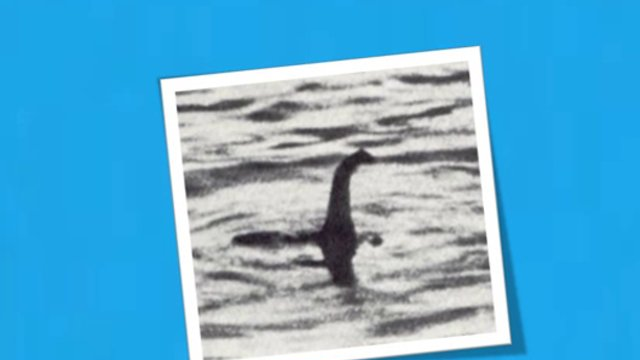
Unit 3, Video 6 – Speaking effectively: Intonation 1 (Exercise 3.1)
Click here for supplementary interactive exercises
a) The Surgeon’s Photograph was a hoax.
b) The Surgeon’s Photograph was a hoax?

Unit 3, Video 7 – Speaking effectively: Intonation 2 (Exercise 3.2)
Click here for supplementary interactive exercises
a) Three quite common causes of monster sightings at Loch Ness are boat wakes, mirage effects and floating tree trunks.
b) Sonar readings have proved that the monster exists, haven’t they?
c) Sonar readings can sometimes be false, can’t they?
d) Why not use a submarine?
e) That brings us to the end of my presentation.
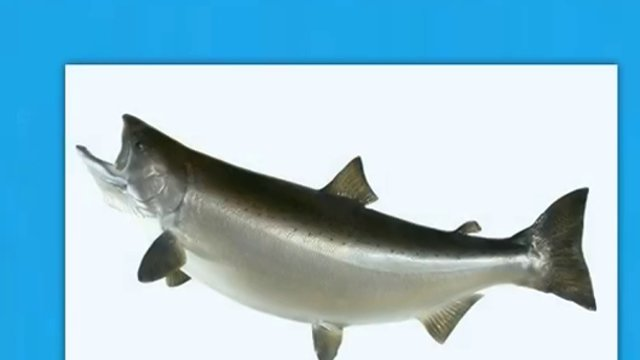
Unit 3, Video 8 – Speaking effectively: Intonation 3 (Exercise 3.4)
Click here for supplementary interactive exercises
a) The monster may just be a large fish.
b) It’s possible that the witnesses were simply mistaken.

Unit 3, Video 9 – Speaking effectively: Intonation 4 (Exercise 3.6)
Click here for supplementary interactive exercises
a) The works of three authors have been particularly influential at Loch Ness: Rupert Gould, Constance Whyte and Tim Dinsdale.
b) The Surgeon’s Photograph was exposed as a hoax in 1994, wasn’t it?
c) Newspaper reports aren’t always very reliable though, are they?
d) It may be that the monster feeds off the mud and sediment at the bottom of the Loch.
e) Could the Loch be drained?
f) It’s possible that head and neck sightings are simply tree branches floating in the water.
g) Scientists last visited the Loch in 2003.

Unit 3, Video 10 – Answering questions 1 (Exercise 4.1)
Click here for supplementary interactive exercises
Student 1: I have a question. Do you think the monster might just be a large otter?
Lecturer: That’s a very good question. It’s certainly true that otters may have accounted for some of the sightings, particularly the ones on land.
Student 2: I still don’t understand why the monster can’t be a plesiosaur. Can you explain that part again?
Lecturer: Sorry if I didn’t explain that very well. Let me try again. The main difficulty with the plesiosaur theory is that it’s hard to see how such a creature could have got into the Loch in the first place.
Student 3: What did you mean when you said that unexplained sightings are simply cases of mistaken identity?
Lecturer: Let me try to put it another way. There are a number of factors at Loch Ness that make it particularly easy for people to get confused.

Unit 3, Video 11 – Answering questions 1 (Exercise 4.1)
Student 1: I have a question. Do you think the monster might just be a large otter?
Lecturer: That’s a very good question. It’s certainly true that otters may have accounted for some of the sightings, particularly the ones on land.
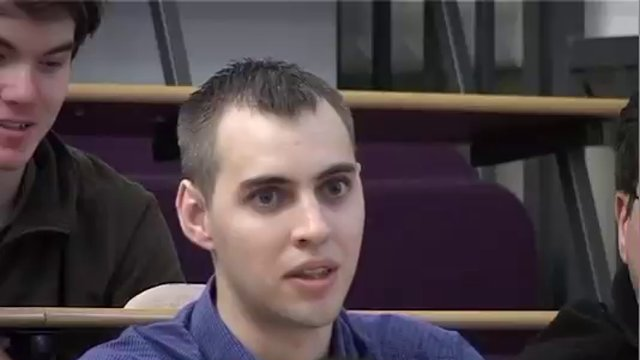
Unit 3, Video 12 – Answering questions 1 (Exercise 4.1)
Student 2: I still don’t understand why the monster can’t be a plesiosaur. Can you explain that part again?
Lecturer: Sorry if I didn’t explain that very well. Let me try again. The main difficulty with the plesiosaur theory is that it’s hard to see how such a creature could have got into the Loch in the first place.

Unit 3, Video 13 – Answering questions 1 (Exercise 4.1)
Student 3: What did you mean when you said that unexplained sightings are simply cases of mistaken identity?
Lecturer: Let me try to put it another way. There are a number of factors at Loch Ness that make it particularly easy for people to get confused.

Unit 3, Video 14 – Answering questions 2 (Exercise 4.2)
Click here for supplementary interactive exercises
Answer 1: That’s a very good question. It’s certainly true that otters may have accounted for some of the sightings, particularly the ones on land. One night back in the 1930s, two girls reported seeing a brown animal cross the road and enter the Loch. Going on the girls’ description, this was almost definitely just an otter.
Answer 2: Sorry if I didn’t explain that very well. Let me try again. The main difficulty with the plesiosaur theory is that it’s hard to see how such a creature could have got into the Loch in the first place. At the time when the last known plesiosaurs became extinct, about 70 million years ago, Loch Ness didn’t even exist – it was just a massive chunk of ice. The Loch as we currently know it has only been around since the end of the Ice Age, so about 10,000 years ago. If we compare 70 million years and 10,000 years, the time gap is simply too big.
Answer 3: Let me try to put it another way. There are a number of factors at Loch Ness that make it particularly easy for people to get confused. We know that under certain weather conditions, it’s perfectly possible to see mirages at Loch Ness. This means that normal and easily identifiable objects such as water birds or floating tree trunks would seem much bigger. Boat wakes are another cause of confusion. For example, it’s been observed that wakes on Loch Ness can appear as much as half an hour after the boat that caused them has disappeared.

Unit 3, Video 15 – Answering questions 2 (Exercise 4.2)
Answer 1: That’s a very good question. It’s certainly true that otters may have accounted for some of the sightings, particularly the ones on land. One night back in the 1930s, two girls reported seeing a brown animal cross the road and enter the Loch. Going on the girls’ description, this was almost definitely just an otter.

Unit 3, Video 16 – Answering questions 2 (Exercise 4.2)
Answer 2: Sorry if I didn’t explain that very well. Let me try again. The main difficulty with the plesiosaur theory is that it’s hard to see how such a creature could have got into the Loch in the first place. At the time when the last known plesiosaurs became extinct, about 70 million years ago, Loch Ness didn’t even exist – it was just a massive chunk of ice. The Loch as we currently know it has only been around since the end of the Ice Age, so about 10,000 years ago. If we compare 70 million years and 10,000 years, the time gap is simply too big.

Unit 3, Video 17 – Answering questions 2 (Exercise 4.2)
Answer 3: Let me try to put it another way. There are a number of factors at Loch Ness that make it particularly easy for people to get confused. We know that under certain weather conditions, it’s perfectly possible to see mirages at Loch Ness. This means that normal and easily identifiable objects such as water birds or floating tree trunks would seem much bigger. Boat wakes are another cause of confusion. For example, it’s been observed that wakes on Loch Ness can appear as much as half an hour after the boat that caused them has disappeared.
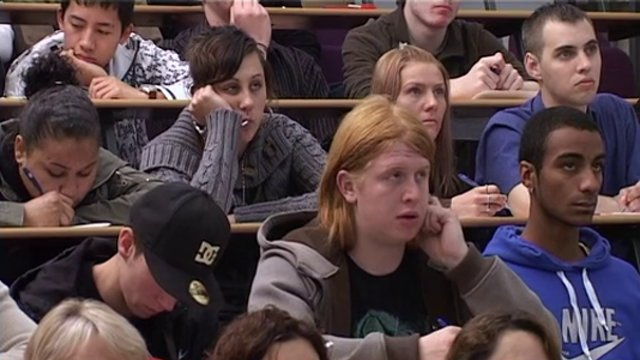
Unit 3, Video 18 – Closing phrases (Exercise 5.1)
Click here for supplementary interactive exercises
Closing 1
Does anyone have any more questions? In that case, I’ll finish my presentation here. Thank you for listening.
Closing 2
If there are no more questions, I’ll stop here. Thanks very much for your attention.


